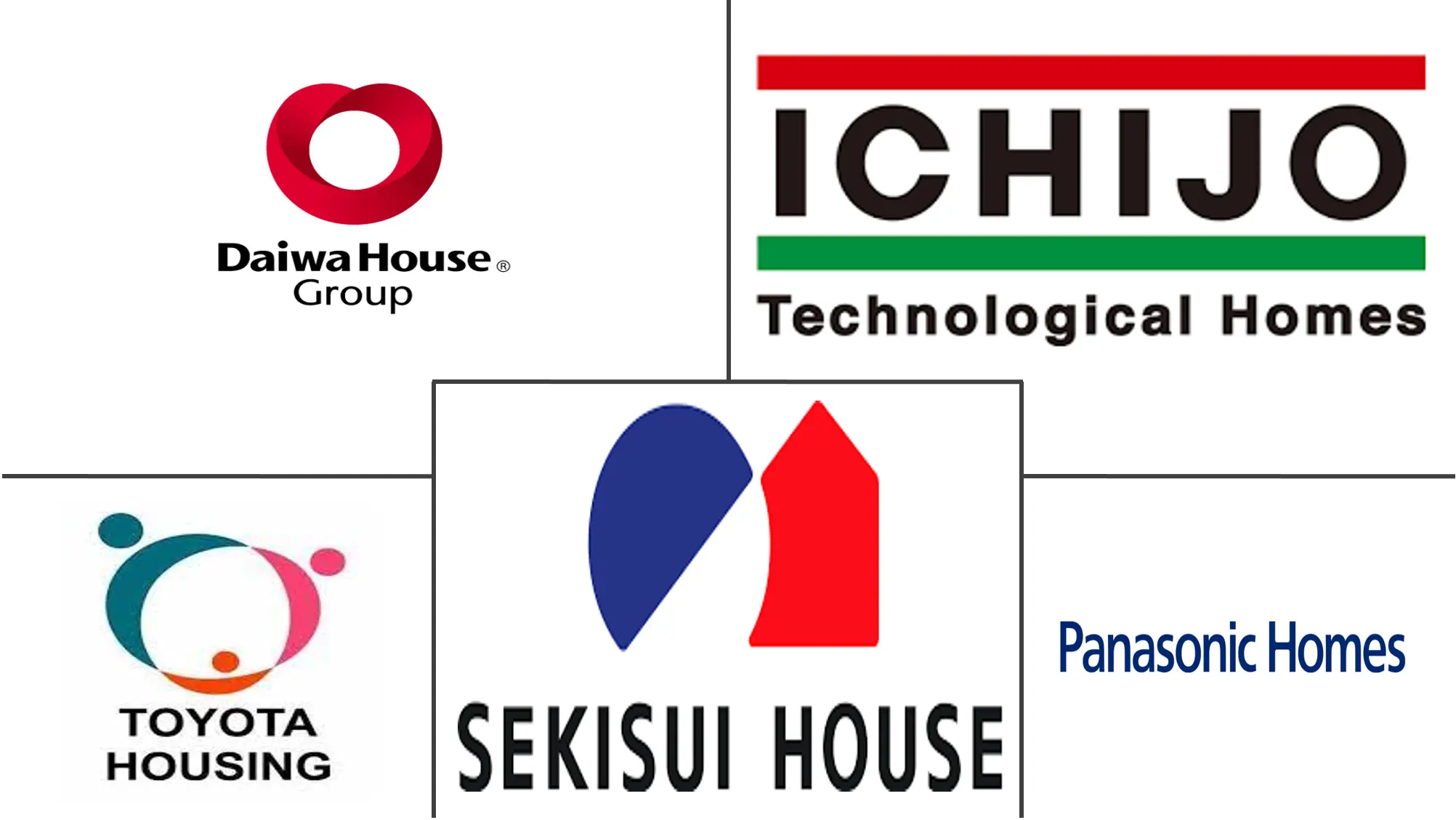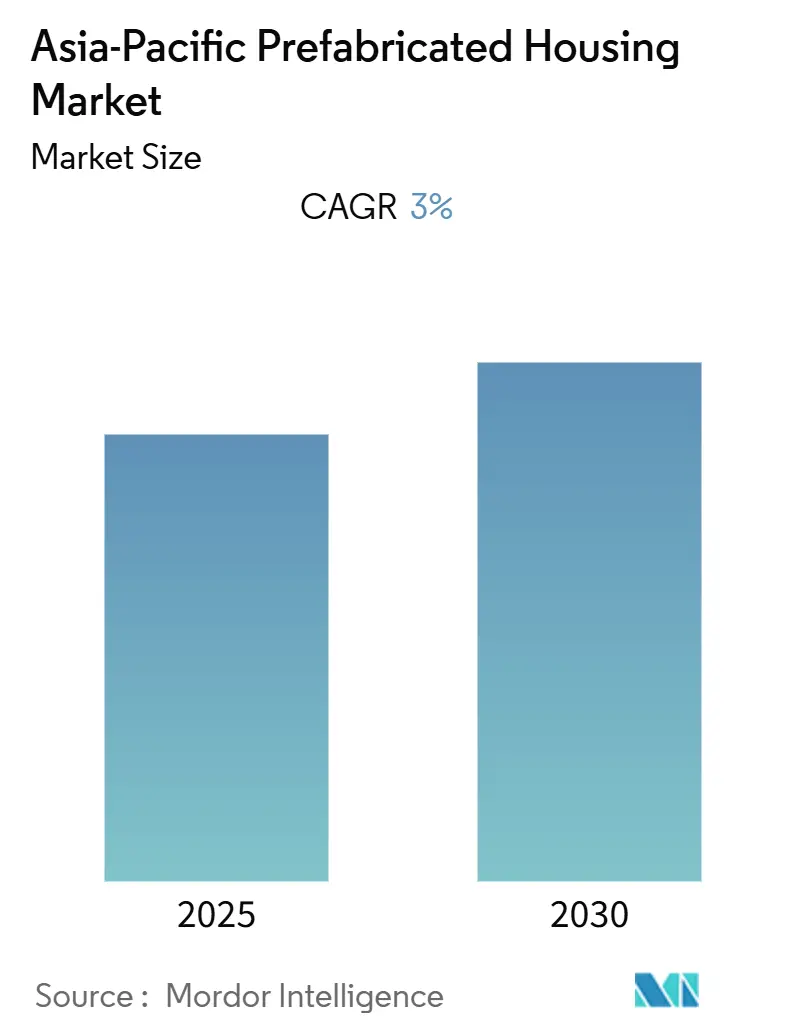
Asia-Pacific Prefabricated Housing Market Analysis by Mordor Intelligence
The Asia-Pacific Prefabricated Housing Market is expected to register a CAGR of 3% during the forecast period.
- The Asia-Pacific prefabricated housing market is witnessing notable growth, attributed to factors such as rapid urbanization and the increasing demand for affordable housing solutions. Technological advancements, including Building Information Modeling (BIM) and automation, are reported to be improving construction efficiency and quality. Governments in the region are said to be actively promoting sustainable building practices, which is further encouraging the adoption of prefabricated construction methods. Countries such as China, Japan, and India are reportedly leading the market due to significant investments in infrastructure development, which is driving the demand for cost-effective and timely construction solutions.
- In December 2024, Indonesia, facing a housing backlog of 12.7 million units, emphasized modular housing as part of its three-million-house program under President Prabowo Subianto's administration. This initiative is aimed at addressing the housing deficit by reducing construction timelines and costs, aligning with the broader regional trend of adopting prefabricated housing to meet growing urban housing demands.
- Technological advancements are said to be a key driver of the Asia-Pacific prefabricated housing market. Innovations such as Building Information Modeling (BIM) and 3D printing are reportedly enhancing design precision and construction efficiency, which are critical for meeting the region's housing needs. Automated manufacturing processes are also noted to be streamlining production, reducing labor costs, and minimizing material waste. These advancements are contributing to faster project completion and improved quality control, making prefabricated housing an increasingly viable solution for addressing the region's housing challenges.
- In conclusion, the Asia-Pacific prefabricated housing market is evolving rapidly, driven by urbanization, government initiatives, and technological progress. The market's focus on cost-effective, sustainable, and efficient construction methods positions it as a critical solution to the region's growing housing demands, with countries like China, Japan, India, and Indonesia playing pivotal roles in shaping its trajectory.
Asia-Pacific Prefabricated Housing Market Trends and Insights
Single-Family Homes Leading the Demand
The single-family segment has been identified as a key driver in the Asia-Pacific prefabricated housing market, attributed to the growing demand for affordable, efficient, and sustainable housing solutions. Industry reports highlight that prefabricated single-family homes are gaining traction due to their ability to reduce construction time, lower costs, and ensure better quality control. These factors are playing a critical role in addressing housing shortages and managing the challenges posed by rapid urbanization in the region.
In Japan, the average price of second-hand single-family homes in the Greater Osaka Area reportedly reached approximately 23.6 million Japanese yen (USD 0.16 million) in 2024, reflecting a 1.9% increase in resale prices compared to the previous year. This trend underscores the rising value of single-family homes in the prefabricated housing market, driven by increasing demand and limited supply.
Meanwhile, Australia has been observed to significantly boost its imports of modular housing and prefabricated elements from countries such as China, Vietnam, and Malaysia to address housing affordability and meet growing demand. Over the past five years, imports from China alone were estimated at nearly AUD 500 million (USD 313.30 million). This aligns with the Australian government's strategic objective of constructing 1.2 million new homes between 2024 and 2029, further emphasizing the importance of prefabricated housing solutions in meeting regional housing targets.
In conclusion, the Asia-Pacific prefabricated housing market is witnessing robust growth, with the single-family segment playing a pivotal role. The increasing adoption of prefabricated housing solutions across countries like Japan and Australia highlights their potential to address housing challenges effectively while supporting sustainable urban development.
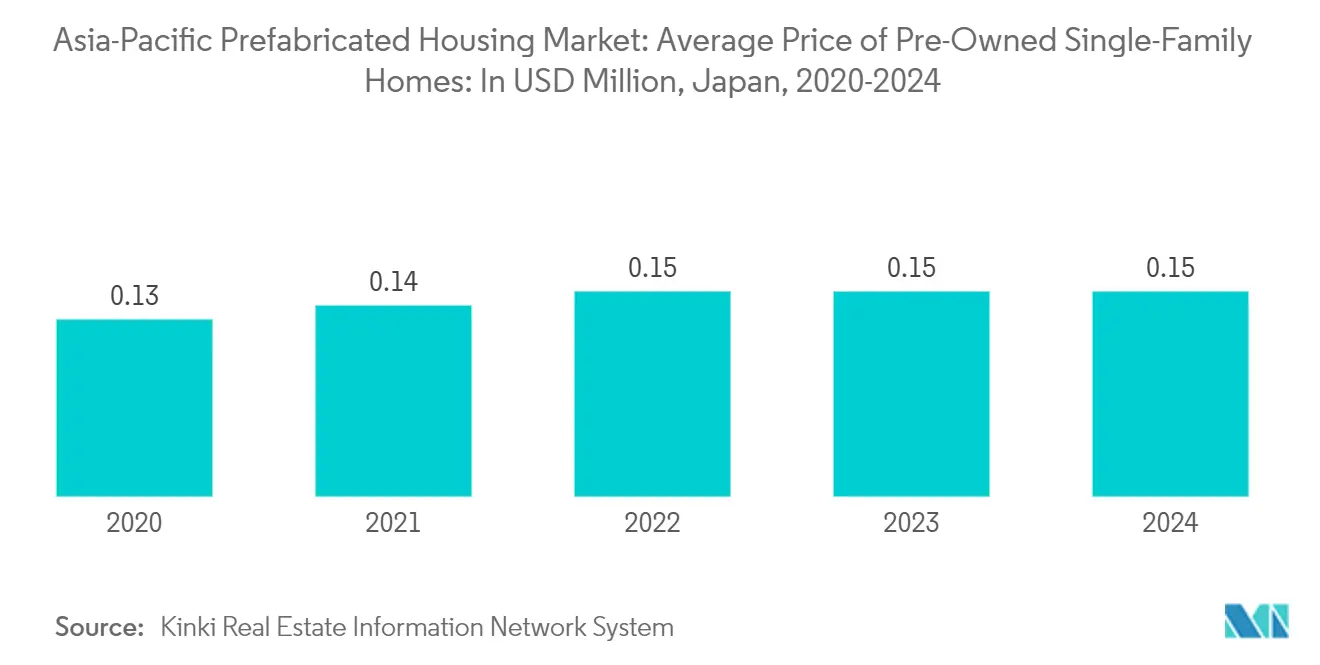
Japan's Role in Shaping the Asia-Pacific Prefabricated Housing Market
Japan is reported to be driving the Asia-Pacific prefabricated housing market in 2025, with its advancements in technology and sustainable construction practices. The country’s expertise in modular housing, earthquake-resistant designs, and energy-efficient prefabricated homes is said to be setting benchmarks for the region. Industry sources indicate that leading Japanese firms are expanding their operations internationally, influencing housing trends across Asia-Pacific. Government policies in Japan, which reportedly support rapid urbanization and eco-friendly construction, are believed to be accelerating the adoption of prefabricated housing in the region. Analysts suggest that Japan’s focus on quality, speed, and innovation is likely to continue shaping the future of prefabricated construction in Asia-Pacific.
Monthly housing reports from Japan for November 2024 indicate a 1.8% decline in total housing starts, which reportedly stood at 65,037 units. Wooden housing starts are said to have increased slightly by 0.3%, reaching 38,854 units, with post and beam starts rising by 2.1% to 30,561 units. Wooden prefabricated housing reportedly surged by 41.5% to 1,050 units, although this growth is noted to be from a small base. However, total prefabricated housing starts are reported to have fallen by 8% to 7,248 units, reflecting a relative weakness in non-wood prefabricated housing. Platform frame starts are said to have dropped for the first time in six months, declining by 10.3% to 7,243 units. Single-family owner-occupied starts reportedly increased by 11.3% to 2,634 units, while multi-family rentals are noted to have dropped by 19.2% to 3,935 units. Built-for-sale spec homes are said to have fallen by 20.1% to 662 units. Reports suggest that wood retained a dominant 59.7% market share in housing starts, while total prefabricated housing and 2×4 housing each reportedly held an 11.4% share of the overall housing market.
In conclusion, Japan’s advancements in prefabricated housing and its influence on the Asia-Pacific market are reportedly significant. The country’s focus on innovation, sustainability, and quality is expected to continue driving growth and setting standards in the region’s prefabricated housing market.
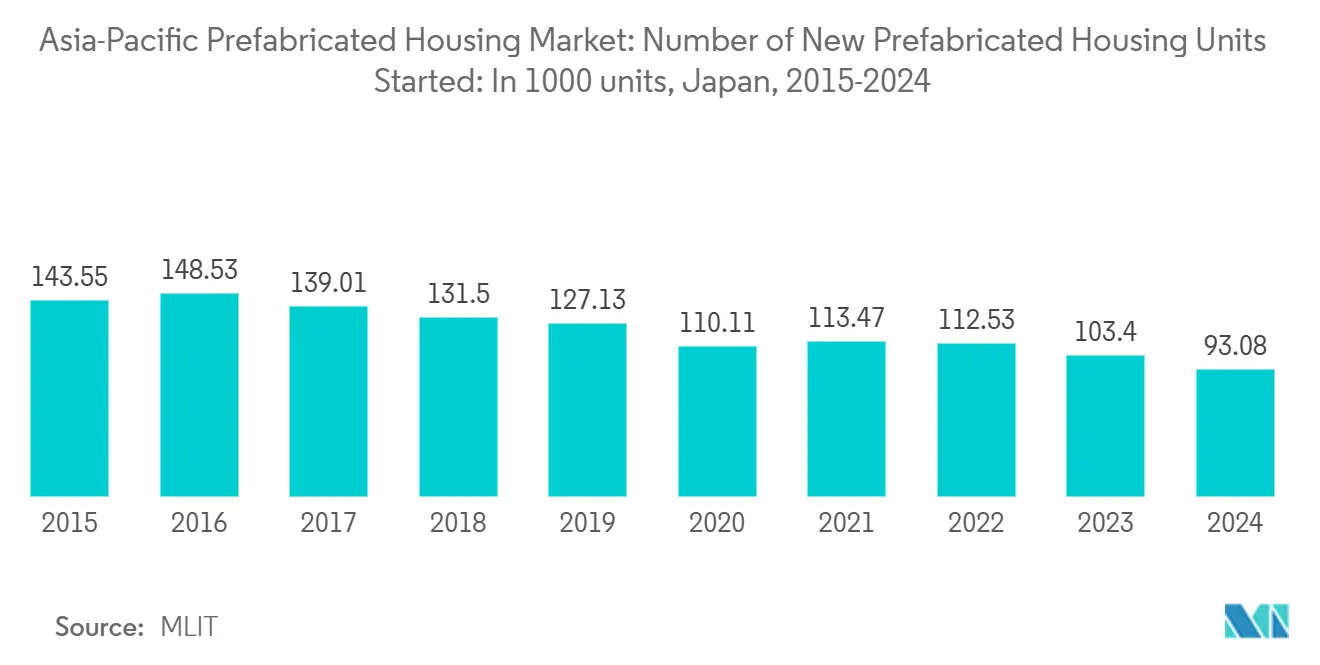
Competitive Landscape
The Asia-Pacific Prefabricated Housing Market is highly competitive and fragmented, with a large number of local and regional and a few global players penetrating the market. Major players in the market include Daiwa House Industry, Sekisui House, Ichijo, Panasonic Homes, and Toyota Housing Corporation. The market is expected to grow during the forecast period due to the increase in prefab construction building investments and upcoming major projects in the region.
For instance, Ichigo Hotel REIT Investment Corporation, on November 2024, reached an agreement to purchase The OneFive Marine Fukuoka/Nest Hotel Hakata Ekimae from Ichigo Investment Advisors Co., Ltd. for Japanese Yen 9.1 billion (USD 0.060 billion). This all-cash transaction has been highlighted for its potential influence on global investment trends, including those in the Asia-Pacific Prefabricated Housing Market.
Asia-Pacific Prefabricated Housing Industry Leaders
Daiwa House Industry
Sekisui House
Ichijo
Panasonic Homes
Toyota Housing Corporation
- *Disclaimer: Major Players sorted in no particular order
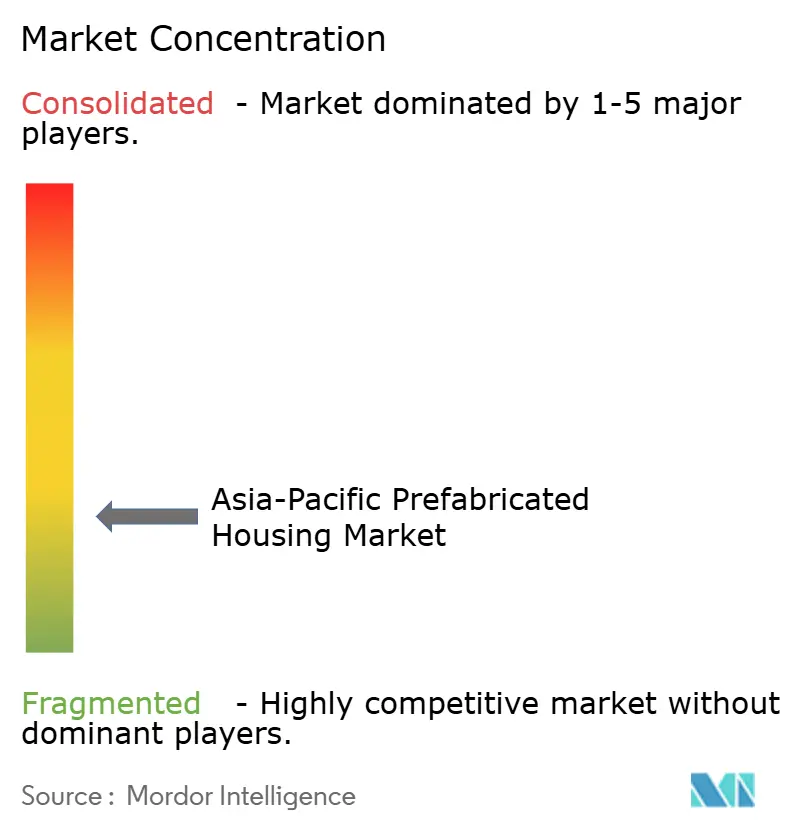
Recent Industry Developments
- November 2024: Baker & McKenzie facilitated a significant move for Daiwa House Industry Co., Ltd., a prominent Japanese firm. Through its U.S. arm, Daiwa House USA Holdings Inc., the company acquired a minority stake in Alliance Residential Company. Alliance Residential is recognized as one of the leading and most dynamic developers in the U.S. rental residential real estate sector. With this acquisition, Daiwa House secures a 35% equity stake in Alliance Residential, marking a significant expansion of its real estate footprint in the U.S.
- April 2024: Sekisui House, Ltd., hailing from Japan, through its subsidiary SH Residential Holdings, LLC, has successfully acquired M.D.C. Holdings, Inc., a prominent homebuilder in the U.S. This acquisition underscores the increasing interest of Japanese firms in global markets, a trend that could have ramifications for the Asia-Pacific Prefabricated Housing Market.
Asia-Pacific Prefabricated Housing Market Report Scope
The prefabricated housing market encompasses the design, manufacture, and off-site assembly of residential structures, which are then transported for final installation. Utilizing modular, panelized, or manufactured methods, these homes significantly cut down on-site labor and construction time. The market thrives on the demand for housing solutions that are not only cost-effective but also sustainable and energy-efficient. Compared to traditional construction, prefabricated homes boast design flexibility, scalability, and minimized material waste. Key players in this arena include manufacturers, developers, contractors, and government agencies championing affordable housing initiatives.
The Asia-Pacific prefabricated housing market is segmented by type (single family and multifamily) and country (China, Japan, India, and the Rest of Asia-Pacific). The report offers market size and market forecasts for Asia-Pacific prefabricated housing market in value (USD).
| Single Family |
| Multifamily |
| China |
| Japan |
| India |
| Rest of Asia-Pacific |
| By Type | Single Family |
| Multifamily | |
| By Country | China |
| Japan | |
| India | |
| Rest of Asia-Pacific |
Key Questions Answered in the Report
What is the current Asia-Pacific Prefabricated Housing Market size?
The Asia-Pacific Prefabricated Housing Market is projected to register a CAGR of 3% during the forecast period (2025-2030)
Who are the key players in Asia-Pacific Prefabricated Housing Market?
Daiwa House Industry, Sekisui House, Ichijo, Panasonic Homes and Toyota Housing Corporation are the major companies operating in the Asia-Pacific Prefabricated Housing Market.
What years does this Asia-Pacific Prefabricated Housing Market cover?
The report covers the Asia-Pacific Prefabricated Housing Market historical market size for years: 2019, 2020, 2021, 2022, 2023 and 2024. The report also forecasts the Asia-Pacific Prefabricated Housing Market size for years: 2025, 2026, 2027, 2028, 2029 and 2030.
Page last updated on:
Asia-Pacific Prefabricated Housing Market Report
Statistics for the 2025 Asia-Pacific Prefabricated Housing market share, size and revenue growth rate, created by Mordor Intelligence™ Industry Reports. Asia-Pacific Prefabricated Housing analysis includes a market forecast outlook for 2025 to 2030 and historical overview. Get a sample of this industry analysis as a free report PDF download.
